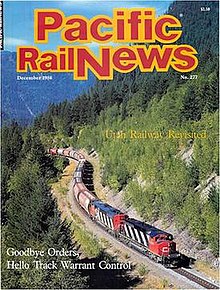
The F Market & Wharves line is one of several light rail lines in San Francisco, California. Unlike most other lines in the system, the F line runs as a heritage streetcar service, almost exclusively using historic equipment from San Francisco's retired fleet and from cities around the world. While the F line is operated by the San Francisco Municipal Railway (Muni), its operation is supported by Market Street Railway, a nonprofit organization of streetcar enthusiasts which raises funds and helps to restore vintage streetcars.

The Airport Line is a route of the SEPTA Regional Rail commuter rail system in Philadelphia, Pennsylvania, which officially runs between Philadelphia International Airport through Center City to Temple University station. In practice, however, only a few trains originate or terminate at Temple University; most are through routed with lines to the north after leaving the Center City Commuter Connection. Half of weekday trains are through routed with the Warminster Line, with the other half of weekday trains through routed with the Fox Chase Line. All weekend and holiday trains are through routed with the Warminster Line and terminate either in Warminster or Glenside.

The Pacific Locomotive Association, Inc. (PLA) is a non-profit organization dedicated to the preservation of the physical aspects and atmosphere of Pacific Coast railroading during the period from 1910 to 1960.

The Philadelphia Transportation Company (PTC) was the main public transit operator in Philadelphia, Pennsylvania, from 1940 to 1968. A private company, PTC was the successor to the Philadelphia Rapid Transit Company (PRT), in operation since 1902, and was the immediate predecessor of the Southeastern Pennsylvania Transportation Authority (SEPTA).
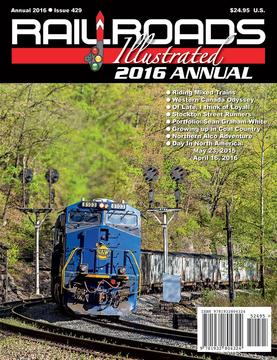
Railroads Illustrated, formerly known as CTC Board, was a monthly magazine, published by White River Productions (WRP), devoted to railroad photography. WRP purchased CTC Board magazine from Hundman Publishing after the May 2006 issue, and rebranded the magazine as Railroads Illustrated, and used the CTC Board name for the news section. December 2014 marked the final monthly issue, with future expanded editions to be released annually. The news section and some feature content now appears in an expanded Railfan & Railroad, which was acquired by WRP in 2014.
Pentrex Media Group, LLC, is an American producer and seller of railfan-related videos and DVDs. It was founded in 1984 and was originally headquartered in Pasadena, California.
Interurban Press was a small, privately owned American publishing company, specializing in books about streetcars, other forms of rail transit and railroads in North America, from 1943 until 1993. It was based in the Los Angeles area, and specifically in Glendale, California after 1976. Although its primary focus was on books, it also published three magazines starting in the 1980s, along with videos and calendars. At its peak, the company employed 10 people and generated about $2 million in business annually.

Passenger Train Journal(PTJ) is an American magazine about passenger rail transport and rail transit past and present, oriented for railfans and rail passenger advocates and published currently by White River Productions. Founded in 1968, it was published continuously until 1996, and monthly from 1979 onward, but then ceased publication. After a 10-year absence, the title was revived in 2006 by a different publishing company, as a quarterly magazine. PTJ deals exclusively with passenger rail, not freight. Although focused on North America, each issue includes at least a small amount of content on overseas—usually European—passenger rail. The magazine is headquartered in Bucklin, Missouri.
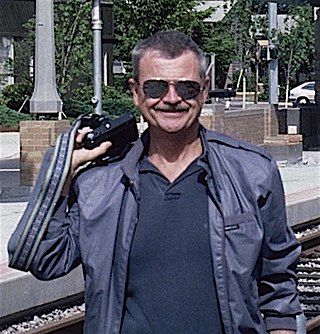
George McClelland Sebree III, better known as Mac Sebree, was an American journalist, writer and publisher whose area of expertise was urban mass transit, particularly urban rail transit. He was also a businessman, being owner and president of the publishing company, Interurban Press, from 1975 until 1993. In addition to writing and publishing historical material, he also followed – and regularly reported on – contemporary developments concerning rail transit, and by the 1990s he had become an expert on light rail in North America.
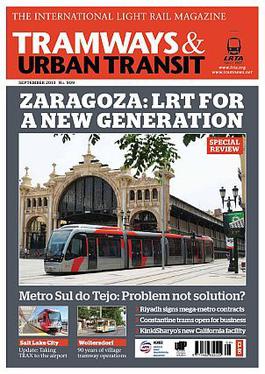
Tramways & Urban Transit(TAUT or T&UT), also known as Modern Tramway, is a British monthly magazine about tramways and light rail transport, published continuously since 1938. Its content is orientated both to tramway enthusiasts and to persons working in the tram transport field or studying tramways. It has been issued monthly from the beginning. Although published in Britain, the magazine's coverage is international, and its regular "World News" column includes detailed news on electric trams and light rail worldwide.

The New Electric Railway Journal was a quarterly American magazine primarily about electric urban rail transit in North America, published from 1988 to 1998, with an international circulation. Its name was a tribute to a much earlier magazine with similar coverage, the Electric Railway Journal, established in 1884 and published until 1931.

Railfan & Railroad is an American monthly magazine that has been in publication since the 1970s. It was the first magazine title established in-house by Carstens Publications. As a magazine dedicated to trains and rail transportation, it stands out from its main competitor Trains as a publication focused on the enthusiast and related activities. Established in 1974 as Railfan magazine, it merged in 1979 with Railroad magazine, which Carstens purchased at that time. The magazine was renamed Railfan & Railroad, but the two former titles were listed separately on the masthead until 2015. The magazine was acquired by White River Productions in September 2014. The magazine is produced monthly, edited by Steve Barry.
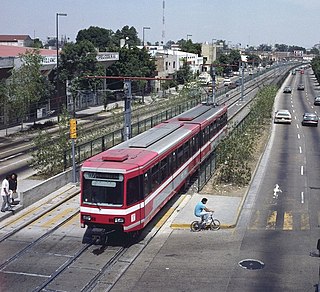
Bombardier Transportation México is a subsidiary company of Bombardier Transportation located in Ciudad Sahagún, Mexico.
White River Productions is an independent publishing company that specializes in books and magazines targeted to railroad enthusiasts and historians. Kevin EuDaly founded the company in 1992 to published the book Missouri Pacific Diesel Power, which he also authored. Several other titles followed, and the company became his full-time venture beginning in 1996. The company expanded when it took on publishing newsletters and managing membership databases for several railroad historical societies. The company is headquartered in Bucklin, Missouri.
William D. Middleton was an American reporter, writer and photographer. The majority of his work was on the subject of railroad history and operation. He published over 20 books and approximately 700 articles for magazines and newspapers, accompanied by photographs. His work as a photographer was profiled in the Spring 2011 issue of Classic Trains magazine.

The Northwestern Pacific Railroad operated a network of electric interurban lines in Marin County, California from 1903 to 1941. The lines ran to Sausalito at the southern tip of the county, where connecting ferries ran to San Francisco. Trains consisted of electric multiple units powered by third rail electrification. The lines were the first third-rail electrification in California, and the first major railroad to use alternating current signals.

33 Ashbury/18th Street is a trolleybus line operated by the San Francisco Municipal Railway. The route is descendant from the first trolleybus service to open in San Francisco, California, United States.
